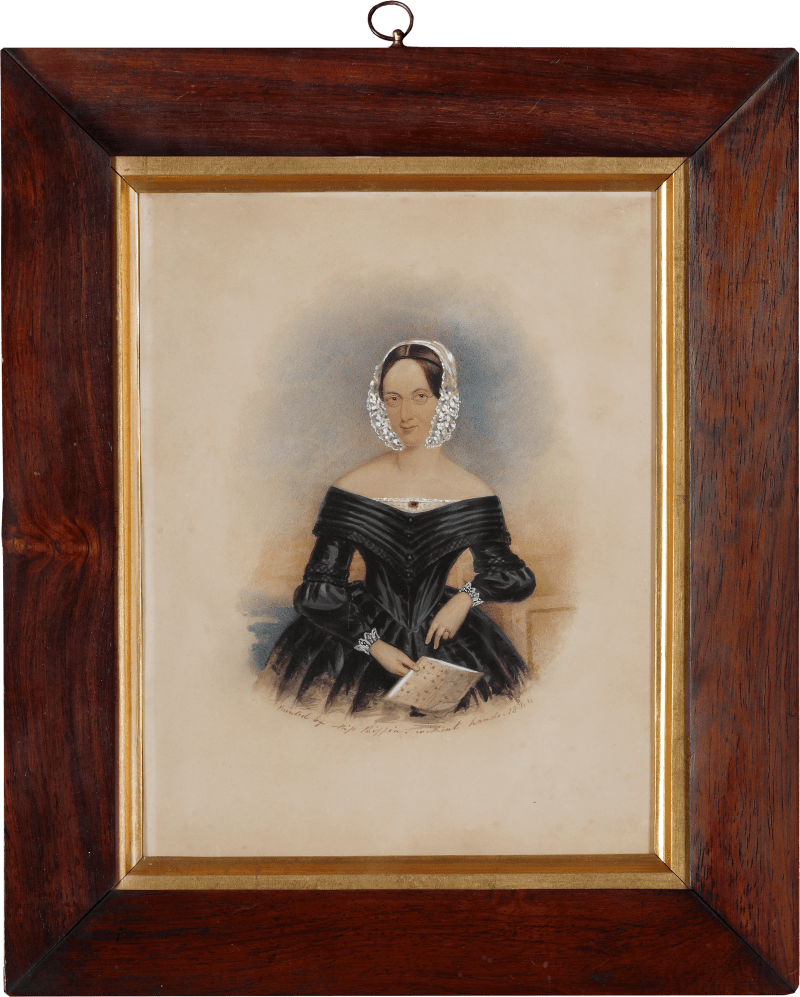Meticulously rendered studies of feathers, such as this work, constitute a fleeting trope within the early oeuvre of Sarah Biffin. This delicate depiction of feathers, recently included in “Without Hands” The Art of Sarah Biffin, exemplifies her early aptitude for observation and intricate detail.
Biffin was born into a farming family in Somerset in 1784, and her baptism records show that she was ‘born without arms and legs’. Teaching herself to write and draw from a young age, Biffin rose to fame as an artist and established a professional career as a portrait painter. Throughout her long and successful career, she travelled extensively, took commissions from royalty, and recorded her own likeness through exquisitely detailed self-portraits.
She began her career in 1804, at twenty years old, when a man named Mr. Dukes offered her employment as part of a travelling act: ‘it was suggested to my Parents that a comfortable living might be obtained by Public Exhibition, and an...
Meticulously rendered studies of feathers, such as this work, constitute a fleeting trope within the early oeuvre of Sarah Biffin. This delicate depiction of feathers, recently included in “Without Hands” The Art of Sarah Biffin, exemplifies her early aptitude for observation and intricate detail.
Biffin was born into a farming family in Somerset in 1784, and her baptism records show that she was ‘born without arms and legs’. Teaching herself to write and draw from a young age, Biffin rose to fame as an artist and established a professional career as a portrait painter. Throughout her long and successful career, she travelled extensively, took commissions from royalty, and recorded her own likeness through exquisitely detailed self-portraits.
She began her career in 1804, at twenty years old, when a man named Mr. Dukes offered her employment as part of a travelling act: ‘it was suggested to my Parents that a comfortable living might be obtained by Public Exhibition, and an engagement was arranged for that purpose.’ [1] Biffin left her family home to travel across the country with Dukes; she signed a contract with her new employer and began a tirelessly itinerant lifestyle, exhibiting at fairs and in regional towns and cities across the length and breadth of Britain. Under these circumstances, Biffin would sew, write, draw, and paint in front of those who paid to watch her work.
All her known feather studies were painted between 1811 and 1812 when she was travelling under the employment of Dukes. She likely adopted feathers as a subject for their visual complexities as well as their availability – feathers were readily used as decorative adornments to ladies’ hats and accessories throughout the nineteenth century. Biffin mastered their depiction; the verisimilitude of the colourfully barred stripes, mottled patterns, and soft, downy barbs at the base of every plume amount to trompe l'oeil, creating the impression the feathers might spontaneously float off the paper. This level of technical competence and handling of watercolour was a remarkable achievement for a young artist at the beginning of her training and demonstrates her early aptitude for detailed observation.
[1] Sarah Biffin, ‘An Interesting Narrative and proposals for a print of Miss Beffin to be dedicated, by permission to HRH the Princess Augusta’, p.1, 942 BIF/10, Liverpool Record Office, Liverpool.








